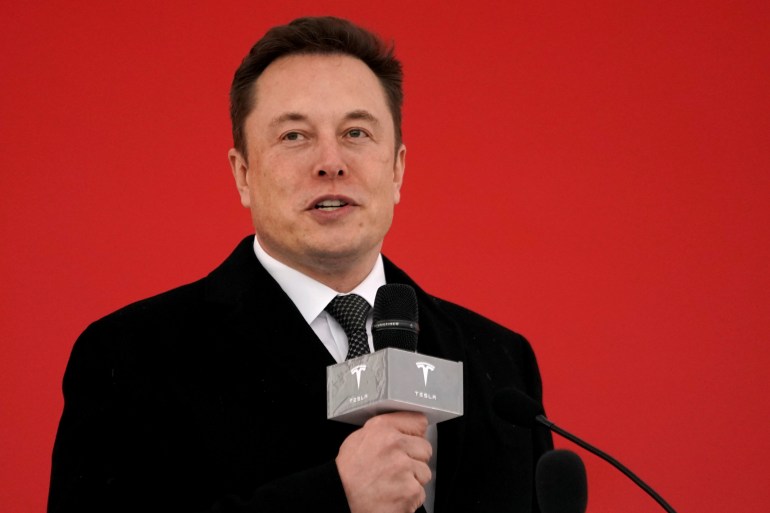Profits came in at $2.5bn, down by 24 percent from the year-ago period on revenues of $23.3bn, which were up by 24 percent.
Shares fell on the results, which were in line with Wall Street expectations for earnings per share but showed a lower profit margin than expected.
Faced with more EV competition from other automakers, Tesla has undertaken a series of price cuts in 2023, most recently over the last 24 hours on some models in the United States.
The company said on Wednesday its profit margins had been trimmed at “a manageable rate” as it pointed to a “unique opportunity for Tesla” while signalling more price cuts ahead.
Tesla has argued that its head start in the EV market makes it “a cost leader” as rivals ramp up.
In a conference call with analysts, Musk described the price cuts as related to macroeconomic factors, saying the intention was to sell more autos, even at lower profit margins.
Musk pointed to the Federal Reserve’s string of interest rate increases as de facto price hikes, adding that worries about a recession and job losses mean “people will generally postpone a big purchase like a new car”.
But as a result of the price cuts, Tesla’s operating margin fell to 11.4 percent from 16 percent in the prior quarter.
Musk and other Tesla executives were asked repeatedly on the conference call about their outlook for profit margins. But they avoided setting a target, saying it partly depends on factors outside of their control, such as the price of key commodities.
Investors who are bullish on Tesla’s strategy see the price cuts as a way to grow its market share at a time when rivals are also ramping up production amid cost pressures.
But sceptics have said the pricing strategy raises questions about Tesla’s long-term profitability, undermining the company’s presumed exceptionality and suggesting it should be valued like other automakers on Wall Street.

Tesla’s price cuts have put the company on a “razor’s edge between maintaining its brand prestige while simultaneously attempting to grow volume”, said Jessica Caldwell, an analyst at Edmunds.
“Buyers have previously vocalised being drawn to Tesla because they felt connected to Elon Musk’s larger-than-life persona and mission and wanted to be associated with an edgy and anti-establishment brand,” Caldwell said.
“As Tesla continues to ramp up volume, it will be held to even more of the standards expected of the mainstream car company that it’s become, as opposed to the upscale, niche brand it used to be.”
In its press release, Tesla said newer plants in Texas and Germany are ramping up. It also said factory tooling was on track for the Tesla “Cybertruck”, an unorthodox model that has generated fanfare.
Chief Financial Officer Zach Kirkhorn said there had been an improvement in logistics costs and some commodities like lithium. He predicted commodity costs overall would moderate in the second half of 2023.
Currently listed as the world’s second wealthiest person behind LVMH Chief Executive Bernard Arnault, Musk has increasingly spread his efforts well beyond the auto sector.
Besides heading both Tesla and Twitter, Musk recently filed papers to establish the X.AI artificial intelligence corporation based in the US state of Nevada, according to business documents.
Musk is also the founder of SpaceX, which has scheduled for Thursday the first test flight of Starship, a venture “designed to send astronauts to the Moon, Mars and beyond,” according to its website.
As Musk’s profile has risen, he has become a much more polarising figure in US society.
The share of Americans who view Musk favourably has risen to 42 percent, compared with 34 percent three years ago, according to YouGov polling data. But the share of negative views has also risen to 33 percent from 18 percent, according to the data.
Shares tumbled by 5.8 percent to $170.10 in after-hours trading.
